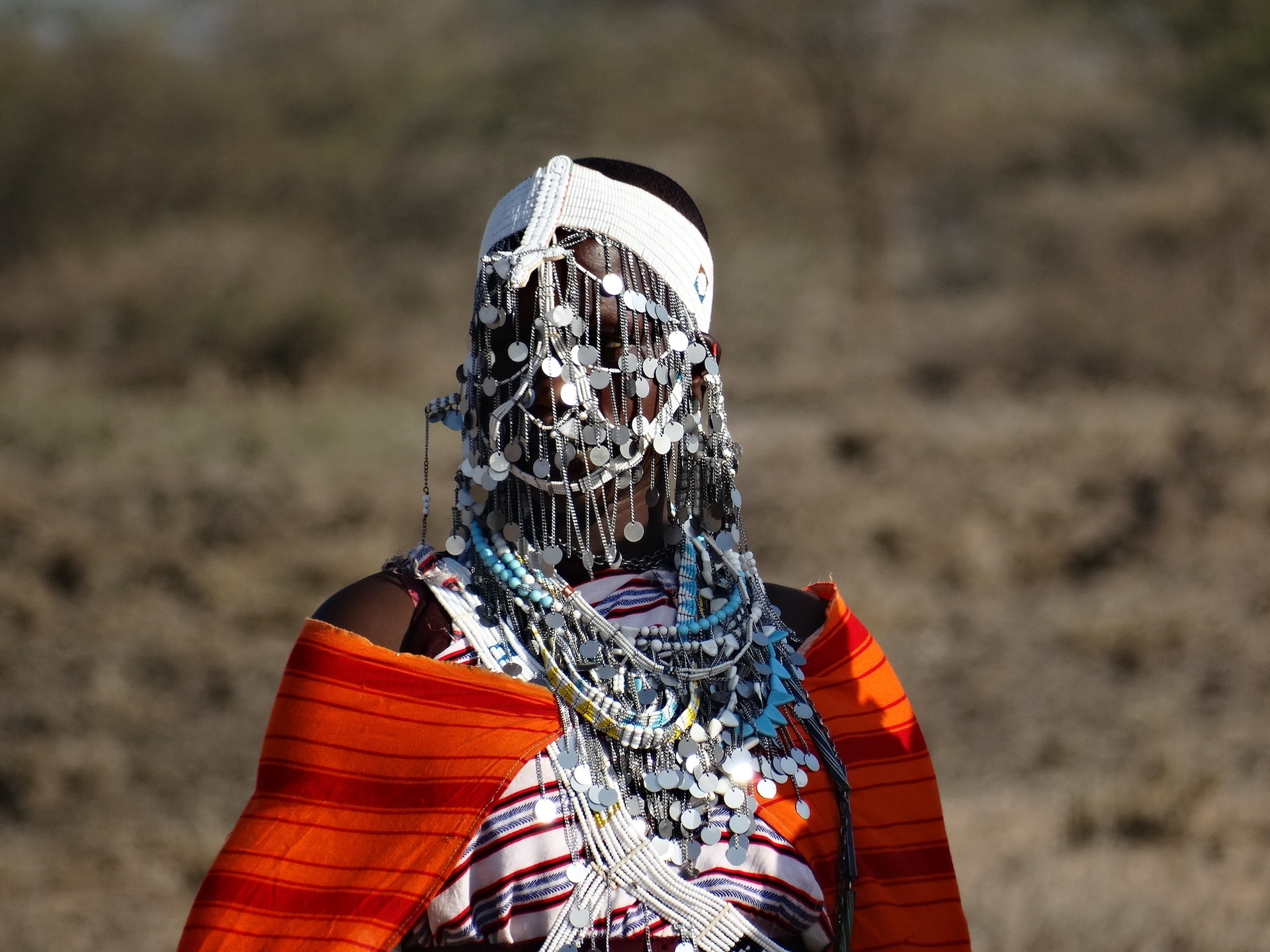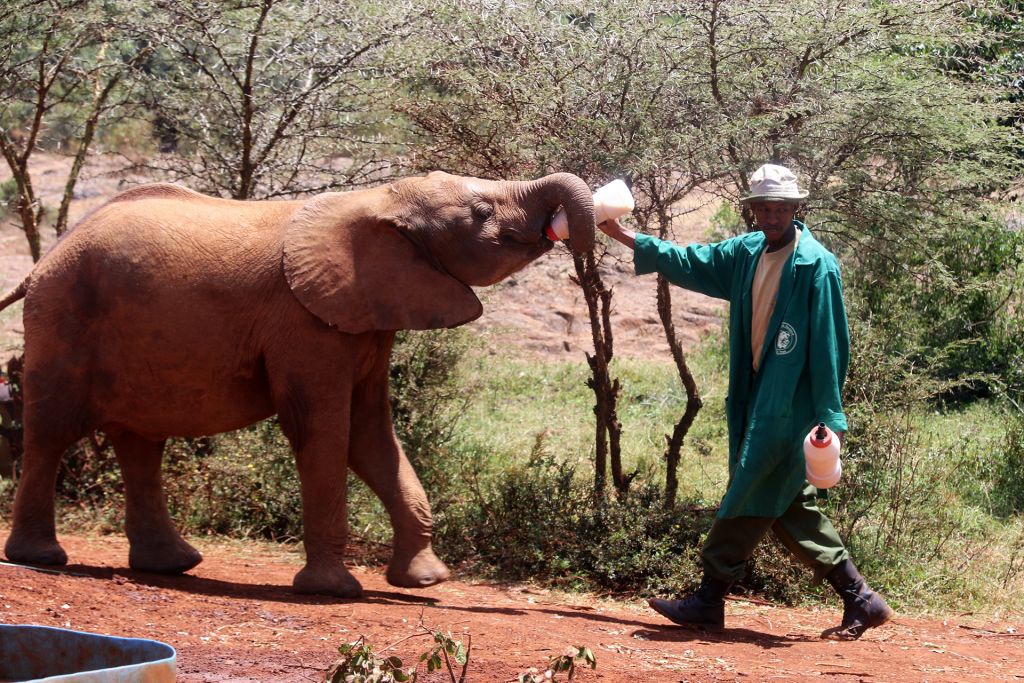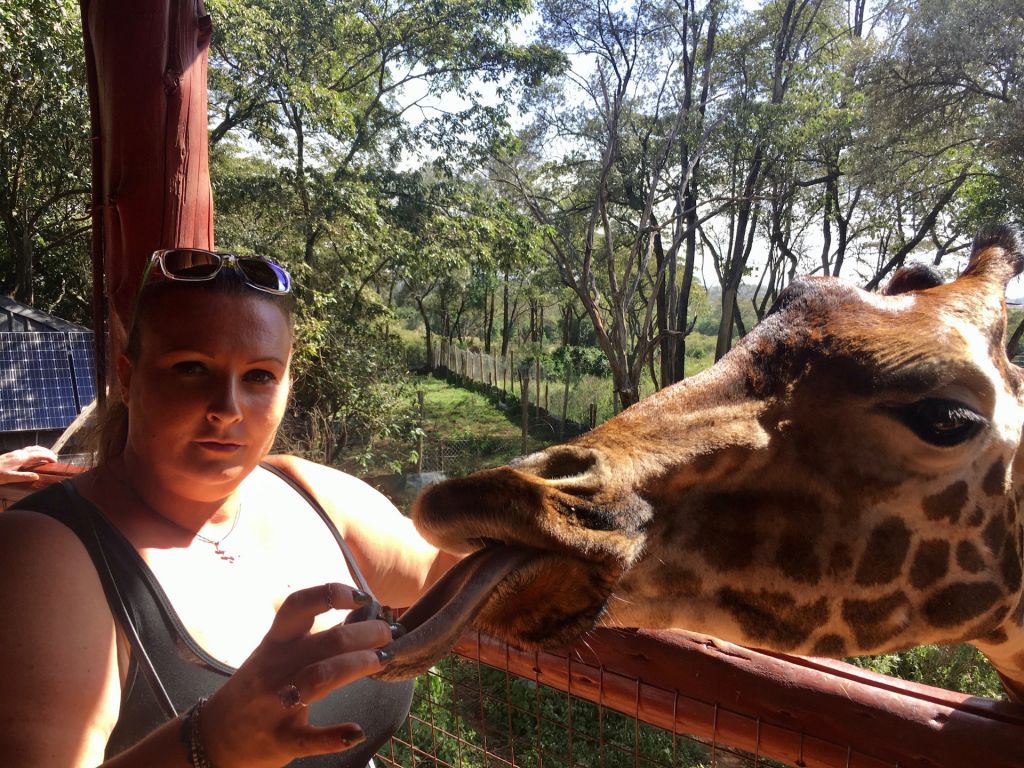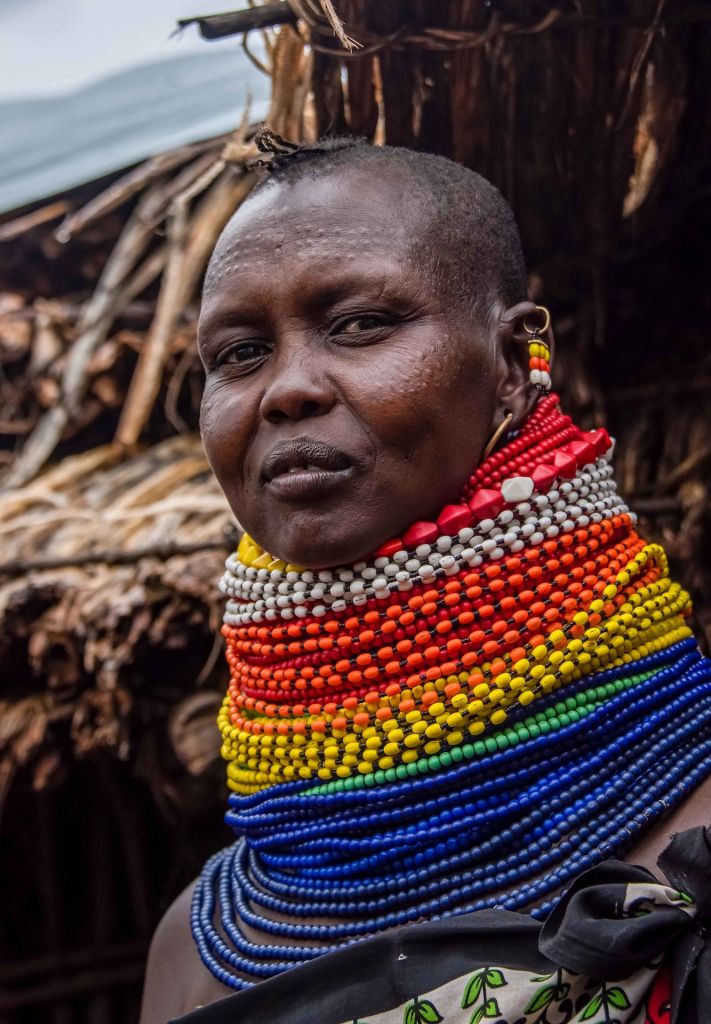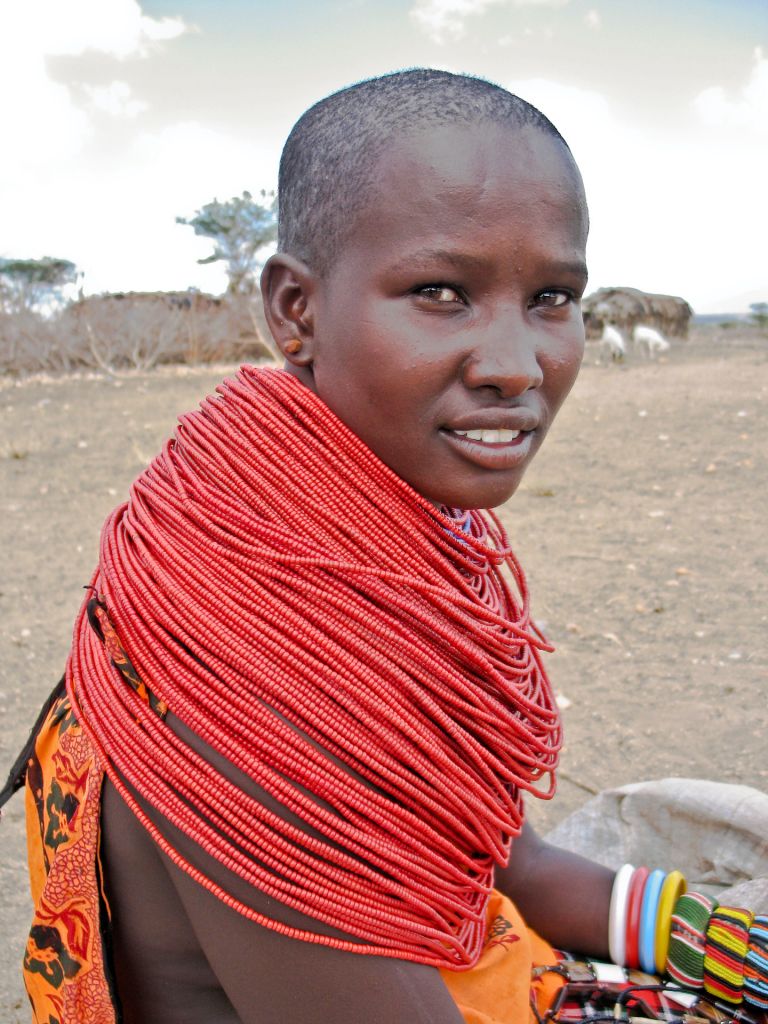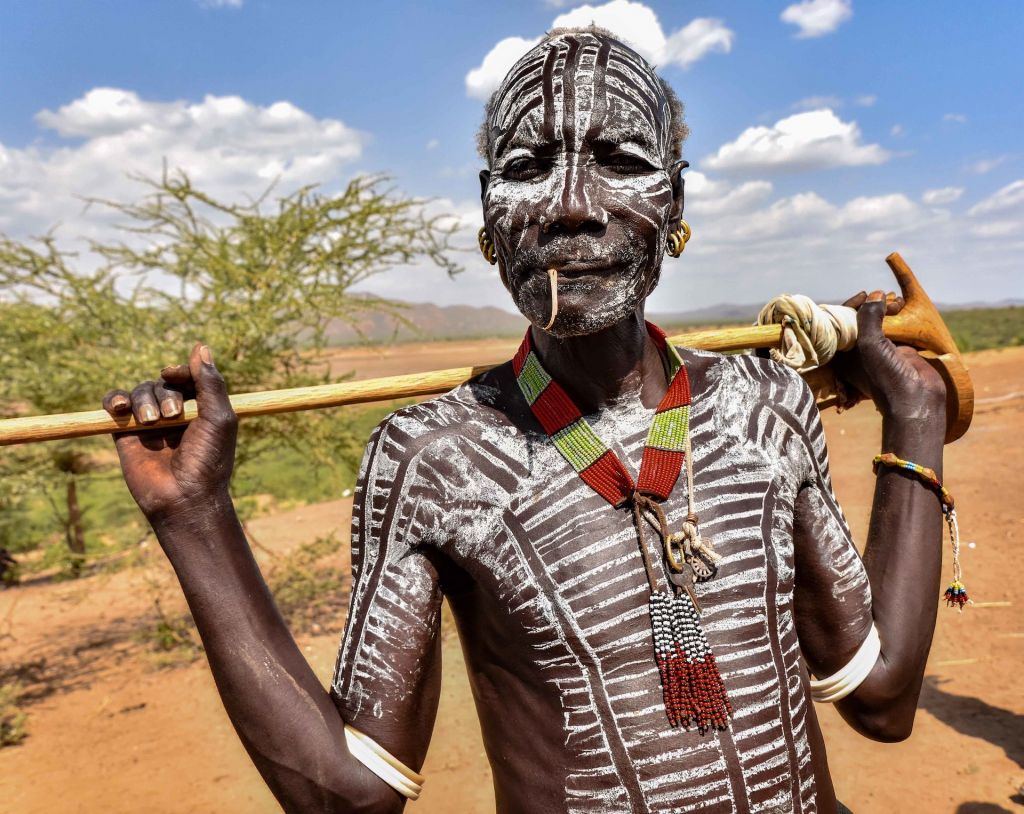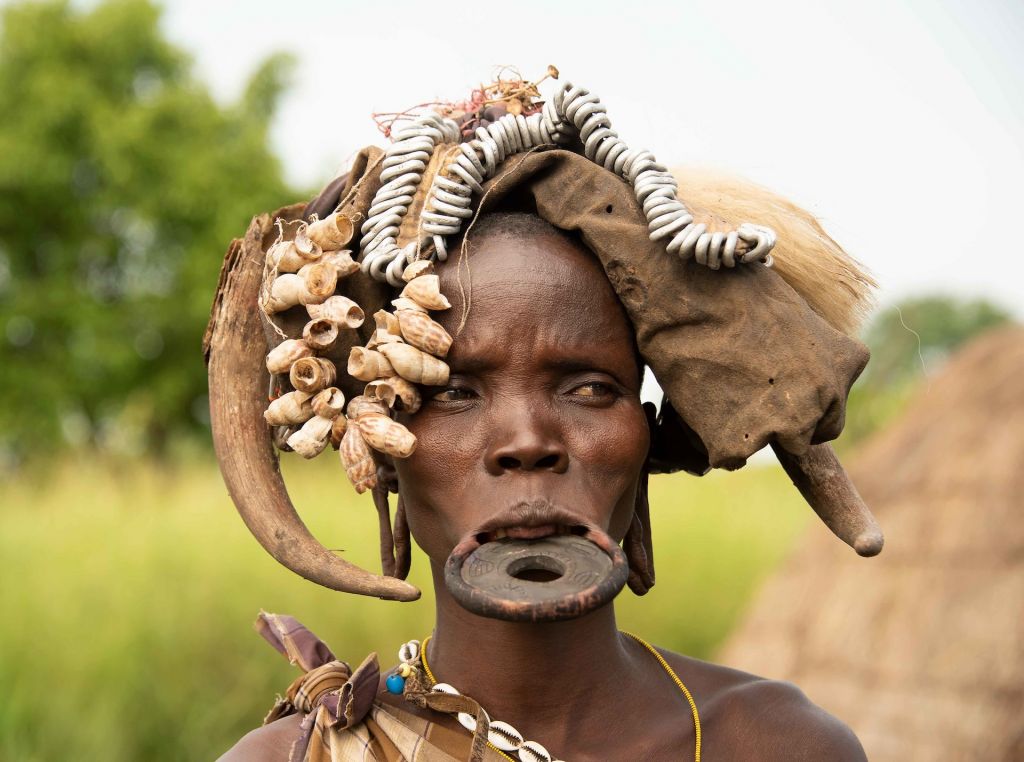Stage 3 from Cape Town to Cairo: From Nairobi to Addis Ababa
The third leg of our trans-African journey from Cape Town to Cairo will take us to explore three states of East Africa: Kenya, with its savannas, safaris, Rift Valley lakes and its traditional populations, Uganda, with the primeval forests that host the great apes, and southern Ethiopia with the spectacular Omo Valley and its populations.
For many, Kenya is synonymous with safaris, not surprisingly, this country is home to many national parks that preserve unspoiled nature and offer the perfect habitat for the survival of many species of wild animals.
But Kenya is also home to several tribes who still live the traditional way of life by celebrating ancient ancestral rites.
Uganda is the land of forests, volcanoes and great primates but also hosts national parks where you can go on savannah safaris.
In Ethiopia, the Omo Valley represents a true kaleidoscope of tribes, each with its different origins and traditions; we will have the opportunity to meet some of these tribes closely and interact with the people in the tribal villages and markets.
The highlights of the journey from Nairobi to Addis Ababa
During this fascinating third leg of the journey from Cape Town to Cairo we will have the opportunity to discover the following destinations:
- The amazing city of Nairobi
- Lake Naivasha
- The Nakuru National Park
- Samburu National Reserve
- Lake Victoria
- Lake Turkana and its populations
- The Mabira Forest
- The city of Kampala and the Nile
- Queen Elizabeth National Park
- Bwindi Impenetrable Forest National Park
- The Omo Valley
- Arbaminch: tribes and crocodiles
- Addis Ababa
Traveling from Nairobi to Addis Ababa: Nairobi the capital of Kenya
Nairobi is a city of a thousand contrasts that contains many precious gems that many travelers miss by making a serious mistake; we will explore the most enchanting and exciting places of this great city discovering its most beautiful side.
The Giraffe Center is one of the unmissable stops, in this sanctuary for the rehabilitation and repopulation of Rothschild’s giraffes it is possible to meet these beautiful animals up close and feed them snacks specially prepared by the center; it is fun to see how the giraffes stretch out their very long tongues to take the tasty morsel.
David Sheldrick Wildlife Trust is an organization that manages an important rescue and rehabilitation program for orphaned elephants, visiting the center is a thrill, seeing the elephants playing and drinking milk from large bottles is unforgettable but beware of the most spiteful who spray the water!
The Nairobi National Park is located just 7 kilometers from the city center, it is a city national park but is home to lions, rhinos, antelopes, giraffes, crocodiles and many other species of animals; is one of the few places where you can take a picture of a giraffe with the skyscrapers of the city as a backdrop.
Traveling from Nairobi to Addis Ababa: Lake Naivasha
Lake Naivasha in Kenya is a beautiful freshwater lake, bordered by dense papyrus and surrounded by forests of yellow-barked Acacia Xanthophlea, known as the fever tree.
Lake Naivasha offers diverse habitats for a variety of mammals, birds and fish; giraffes roam among the acacias, buffaloes wallow in the swamps, zebras and warthogs drink on the lakeshore, and white and black colobus monkeys jump on the treetops.
On Lake Naivasha we will have the opportunity to go on a boat safari to admire the huge population of hippos and enjoy excellent bird watching, Naivasha is in fact known as a world-class birding destination.
Traveling from Nairobi to Addis Ababa: Lake Nakuru National Park
Lake Nakuru National Park in Kenya was first designated as a bird sanctuary in the 1950s and the park included Lake Nakuru and a few kilometers of the surrounding lake area, in the 1960s the park was expanded to to include the savannah area and in 1968 it was officially declared a National Park.
The surface of Lake Nakuru occupies about a third of the park, the remaining areas are areas of open savannah and yellow acacia woods.
In the park there are 50 species of mammals and over 400 species of birds, in particular flamingos and pelicans.
The park is home to Kenya’s largest population of rhinos, both white and black, and the rare Rothschild’s giraffe.

Traveling from Nairobi to Addis Ababa: the splendid Samburu National Reserve
Samburu National Reserve is one of Kenya’s lesser-known national parks, but it’s an exciting destination and safaris always offer exceptional sightings.
Located along the Ewaso Nyiro River, the reserve is rich in wildlife with an abundance of rare species defined as the Samburu Special Five namely: Grevy’s zebra, Somali ostrich, reticulated giraffe, gerenuk or giraffe antelope and oryx beisa.
The reserve is also home to elephants and large predators such as the lion, leopard and cheetah as well as a good number of wild dogs.
Birdlife is abundant with over 450 species recorded in the reserve.

Traveling from Nairobi to Addis Ababa: Lake Victoria
On the western frontier of Kenya lies the great expanse of Lake Victoria. This huge lake, commonly known as Nyanza, forms a natural border between Kenya, Tanzania and Uganda.
The lake is the heart of the African continent, the source of its most powerful river, the Nile. This mighty body of water is full of fish life, with glittering schools of colorful cichlids and large Nile perch.
Fishing brings many visitors to this lake, mainly in search of the Nile perch, which is considered a world-class wild fish.
The shores of Lake Victoria are also home to numerous populations, the most populous and famous of these is made up of the Luo people who preserve interesting ceremonies and rites.
Traveling from Nairobi to Addis Ababa: the people of Lake Turkana
Lake Turkana, in northern Kenya in an arid area, is a large and beautiful lake also known as the Jade Sea due to the color of its waters, it is a remote place where there are rich tribal cultures of different peoples such as: El Molo, Samburu, Gabbra, Rendile, Oromo, Dasannach, Borana, Pokot and Turkana.
Turkana is the largest permanent desert lake in the world, bordering the Chalbi Desert.
Lake Turkana is home to three national parks that have been declared a World Heritage Site by UNESCO, they are: the Sibiloi National Park which is located on the eastern shore of the lake, the Central Island National Park is located on the Central Island, also known as Nile Island and the South Island National Park.
Kenya has the richest prehistoric fossil heritage dating back over 100 million years, and the ecosystem of Lake Turkana is among the six world heritage sites of Kenya: in this area the almost complete skeleton of a human fossil known as Turkana boy dated 1.6 million years.
The lake is alkaline and hosts the largest population of Nile crocodiles, there are also numerous hippos and numerous other animals that live on its banks including hyenas, leopards, zebras, oryxes and gazelles, birdwatching is an activity that gives great sightings.
The people living on the shores of the lake are fascinating and still retain their traditional attires and still celebrate ancient ceremonies and rituals of passage.
Among the populations we will meet there are obviously the Turkana who are famous for the large number of necklaces that women usually wear and which represent a status symbol.
Traveling from Nairobi to Addis Ababa: the Mabira Forest in Uganda
The Mabira Forest is one of the last remaining rainforests and the largest in central Uganda; it has been protected as a Mabira Forest Reserve since 1932.
The Mabira Forest has over 312 species of trees and a huge biodiversity that includes 315 species of birds, 218 species of butterflies, 97 species of moths, 40 species of small mammals including the Cercocebo moro, also called the white-collared cercocebo or of Mangabey and many nocturnal animals.
Bird watching in the central forest of Mabira is fantastic due to the high density of birds that come here attracted by the numerous fruit trees that the forest is home to.

Traveling from Nairobi to Addis Ababa: Queen Elizabeth National Park
Queen Elizabeth National Park is one of the oldest parks in Uganda, it was published in the Official Gazette, along with Murchison Falls National Park in 1952.
The park was initially known as Kazinga National Park before being renamed in 1954 to commemorate a visit by Queen Elizabeth II.
Queen Elizabeth National Park is located on the western arm of the Rift Valley of Africa, which connects Uganda to Malawi.
The park is a great destination for wildlife safaris, hosting 95 species of mammals, more than any other park in Uganda and as many as 619 species of birds, the second highest of any park in Africa and the sixth highest of any park in the world.
Queen Elizabeth National Park is also the West African national park with the largest number of hippos, the park is home to a population of 5,000.

Traveling from Nairobi to Addis Ababa: Bwindi National Park in Uganda
Bwindi Impenetrable Forest National Park is located on the edge of the Rift Valley in southwestern Uganda; this impenetrable forest is the oldest and most biologically diverse rainforest, with over 400 plant species.
Bwindi Impenetrable National Park is home to half of the world’s mountain gorillas and is a UNESCO World Heritage Site.
In addition to protecting two great primates such as gorillas and chimpanzees, the Park protects at least 120 species of mammals, 346 species of birds, 2022 species of butterflies, 163 species of trees, 100 species of ferns, 27 species of frogs, chameleons, geckos.

Traveling from Nairobi to Addis Ababa: the Omo Valley in Ethiopia
In Ethiopia we will explore the incredible Omo Valley, an area of great interest due to the concentration of traditional populations that inhabit it; UNESCO has included the Omo Valley in the list of World Heritage sites precisely to preserve its cultural integrity.
During our trip to the Omo Valley we will have the opportunity to meet some of the most iconic tribes of Ethiopia:
- The Karo
- The Hamers
- The Mursi
The Karo
The Karo tribe, or Kara as they like to be called, lives in traditional villages along the banks of the Omo river practicing fishing and sheep farming, they are famous for body painting and body modification.
They are a friendly group and share some traditions and rites of passage with their neighbors.
The women wear simple skirts in leather or embroidered fabric and leave the bust uncovered which is embellished with numerous colored necklaces.
The Hamers
Hamer are one of the largest groups in the Omo Valley, one of the most important aspects of their social organization is the rite of passage to adulthood that young males have to go through in order to get married: the Salto del Toro.
The Salto del Toro is a ritual in which the whole village participates and consists of a test of strength and courage.
The hairstyles of the Hamer women are a distinctive feature, a bob of braids made red by a special mixture of butter and ocher; also the necklaces that Hamer women wear represent a status symbol and indicate their social position.
Mursi
The Mursi tribe is perhaps the most iconic of the entire Omo Valley, the Mursi women wear lip plates while the men are fierce warriors and never part with their Kalashnikov.
In addition to the lip plate, the Mursi practice other bodily modifications such as large scarifications that have a value of beauty and charm in comparison with the opposite sex.
The Mursi, who are located within the Mago National Park, are not particularly sociable but their aggression is offset by their imaginative headdresses, their traditional clothes and interesting traditions and ceremonies.
Traveling from Nairobi to Addis Ababa: Tribes and Nechisar National Park
The city of Arbaminch will be our base for visiting the Nechisar National Park and the traditional populations that are in the surroundings, namely the Konso and the Dorze.
The Nechisar National Park consists of two lakes and a tongue of land that separates them and which is known as the Bridge of God.
With a pleasant boat trip on Lake Chamo we will have the opportunity to observe the numerous hippos and what is referred to as the Crocodile Market, which is an island where many Nile crocodiles are concentrated.
The Konso are a people known for their fortified villages and their terraced cultivation which have been declared a World Heritage Site by UNESCO.
We will visit a Dorze village consisting of incredible huts up to 12 meters high and which resemble the profile of an elephant’s face.


